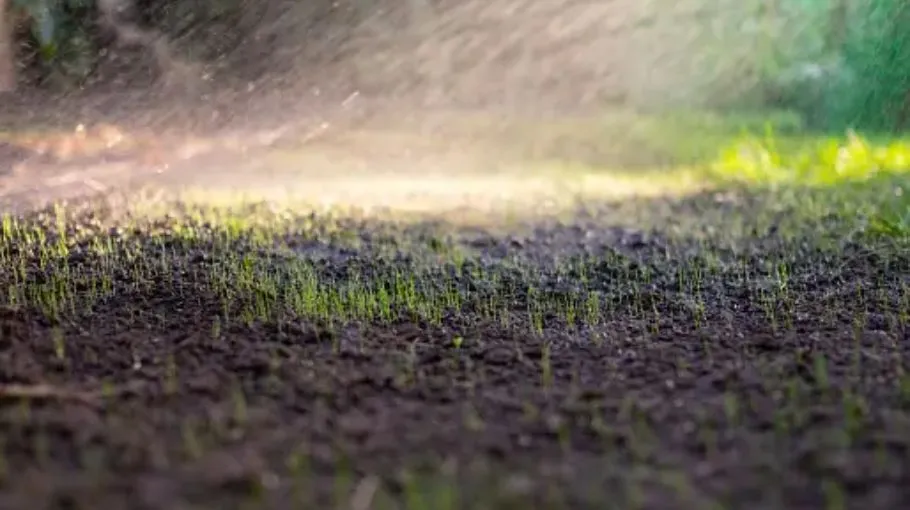Establishing a vibrant lawn begins with the careful planting of new grass seed. One of the most critical factors in ensuring your grass thrives is understanding how often to water new grass seed . In this comprehensive guide, we’ll explore effective watering techniques and tips to help your lawn flourish.
The Role of Water in Grass Seed Germination
When grass seed is sown, it requires moisture to begin the germination process. Proper watering is crucial for several reasons:
- Hydration: Seeds need water to swell and break through their outer shell, initiating germination.
- Nutrient Absorption: Water helps in the absorption of essential nutrients from the soil, which supports healthy growth.
- Root Development: Consistent moisture encourages deeper root growth, which is vital for a healthy lawn.

Without adequate watering, seeds may fail to germinate or establish themselves, leading to bare patches and weak grass.
Initial Watering After Seeding
The first step in understanding how often to water new grass seed is to focus on initial watering:
-
Soak the Soil: Immediately after planting, water the area thoroughly to ensure the soil is moist to a depth of 2 to 4 inches. This initial saturation helps the seeds settle into the soil and start the germination process.
-
Daily Watering for New Seeds: For the first couple of weeks, especially in warm or dry weather, you should water the new grass seed daily. Light watering sessions are preferable—aim for about 5 to 10 minutes of watering each day to keep the soil consistently moist.
Developing a Watering Schedule
As your grass seed begins to germinate, you can adjust your watering schedule. Here’s a suggested timeline:
Weeks 1-2: Daily Watering
During the first two weeks, it’s essential to keep the soil moist. Watering every day helps ensure that the seeds have the moisture they need to sprout.
Weeks 3-4: Transitioning to Every Other Day
Once the seeds have started to germinate and you see new grass blades emerging, you can begin to water every other day. This will still provide adequate moisture while allowing the soil to dry out slightly between watering sessions.
Week 5 and Beyond: Deep Watering
After about four weeks, your grass should be well-established. At this stage, you can switch to deeper watering sessions every 3 to 4 days. This encourages deeper root growth, which is vital for drought resistance and overall lawn health.
Tips for Deep Watering
When deep watering, aim for 20 to 30 minutes of watering to ensure the moisture penetrates deeply into the soil.
Factors Affecting Watering Frequency
Several variables can influence how often to water new grass seed:
- Soil Type: Sandy soils drain quickly and may require more frequent watering. Conversely, clay soils retain moisture longer.
- Weather Conditions: Hot, windy days can increase evaporation, necessitating more frequent watering, while cooler, overcast days may allow for less.
- Grass Type: Different grass varieties have varying water needs. Cool-season grasses often require less water than warm-season grasses.
Identifying Underwatering and Overwatering
Understanding the signs of both underwatering and overwatering is essential:
Signs of Underwatering
- Delayed Germination: If seeds do not sprout within 7 to 14 days, they may be too dry.
- Thin Growth: Grass appears weak and sparse.
- Dry Soil: Soil feels dry and crumbly when checked.
Signs of Overwatering
- Seed Rot: Seeds fail to germinate due to excessive moisture.
- Waterlogged Soil: Soil appears soggy or muddy.
- Fungal Growth: The presence of mold or mildew indicates excess moisture.
Effective Watering Techniques
To optimize your watering routine, consider these practical tips:
-
Use a Timer: Setting a timer on your sprinkler system can help ensure you provide the right amount of water without overdoing it.
-
Water in the Morning: Early morning is the best time to water. This allows the grass to absorb moisture before the heat of the day and minimizes evaporation.
-
Soil Moisture Check: Regularly check the moisture level of the soil. If it feels dry a couple of inches down, it’s time to water.
-
Avoid Night Watering: Watering at night can lead to prolonged wetness, increasing the risk of fungal diseases.
Conclusion
Understanding how often to water new grass seed is crucial for creating a lush, green lawn. By following the guidelines outlined in this article, you can establish a watering routine that promotes healthy growth and a vibrant lawn.
For more expert tips on lawn care and maintenance, visit perfectgreenyard.com. With the right approach to watering and care, your new grass will flourish, giving you the beautiful yard you’ve always wanted!
Comments on “How Often to Water New Grass Seed: Essential Guidelines for a Thriving Lawn”